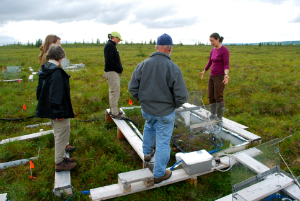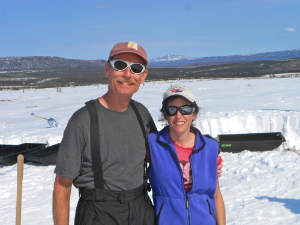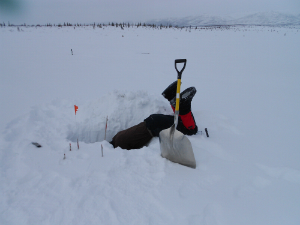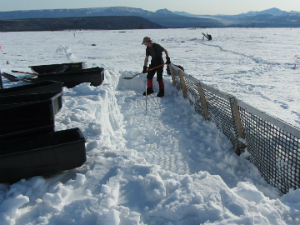SCHUUR LAB - ECOSYSTEM DYNAMICS RESEARCH
PolarTREC activities with people from the Ecosystem Dynamics Lab
PolarTREC (Teachers and Researchers Exploring and Collaborating) is a program in which K-12 teachers spend 2-6 weeks participating in hands-on field research experiences in the polar regions. The goal of PolarTREC is to invigorate polar science education and understanding by bringing K-12 educators and polar researchers together. In 2016, Dr. Marguerite Mauritz worked together with Karen Temple Beamish and the PolarTrec program and designed a lesson plan to help teachers and students interpret data from a manipulative field experiment. Manipulative experiments are an important scientific tool, that allows scientists to prod an ecosystem and see how it responds. These field-based manipulations help scientists to link theories and expected changes to real observations, and refine their predictions. This data interpretation activity will allow students to think more deeply about how scientists develop insights to how the Arctic will respond to a warmer climate, and draw conclusions using graphical presentation of real data. Below is the link to the lesson plan written for PolarTrec. Data interpretation: carbon balance in an arctic wrmaing manipulation
PolarTREC outreach activities: Presentations for the general public Mauritz M (2016) Permafrost Carbon Storage: What lies beneath', Murie Science and Learning Center Evening Speaker Series Other relevant activities Field site tours: Denali Climate Change Course for Teachers (2012); University of Alaska Resilience and Adaptation Program graduate students and faculty (2011); Denali National Park staff (2011, 2012); Healy, AK community members (2011, 2012); Tri-Valley 6-8th grade students, which included a ½ day of student-run experiments (2011) Check out John Wood's blogs for 2011 and 2012. Tom Lane's blog in 2013, and Karen Temple Beamish's blog in 2016
|
back to outreach

















